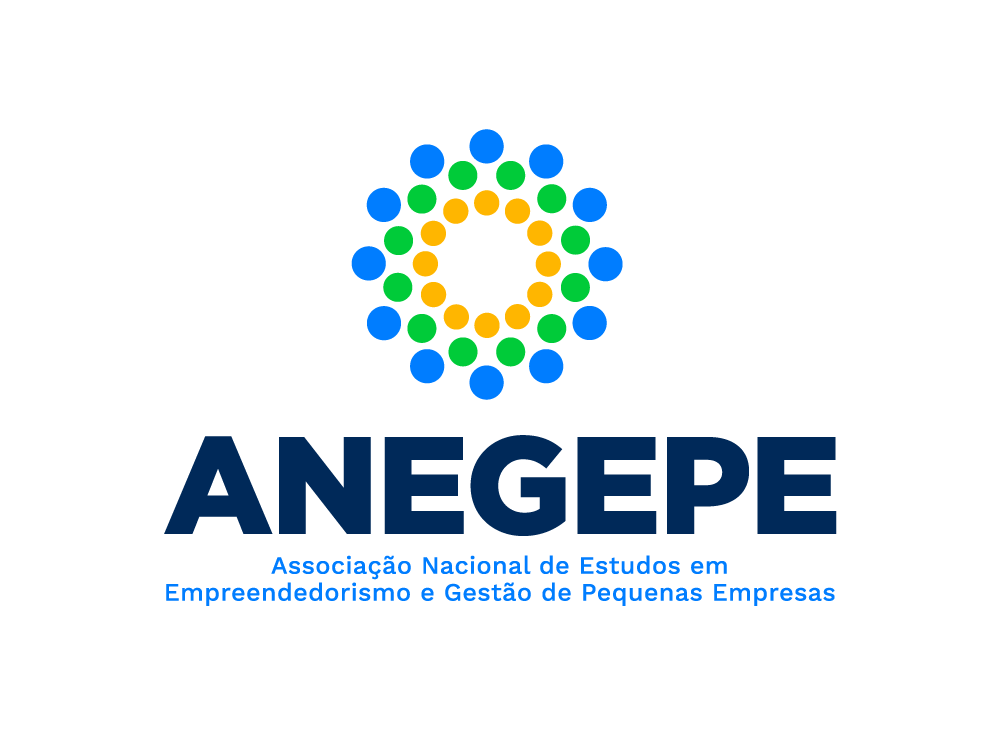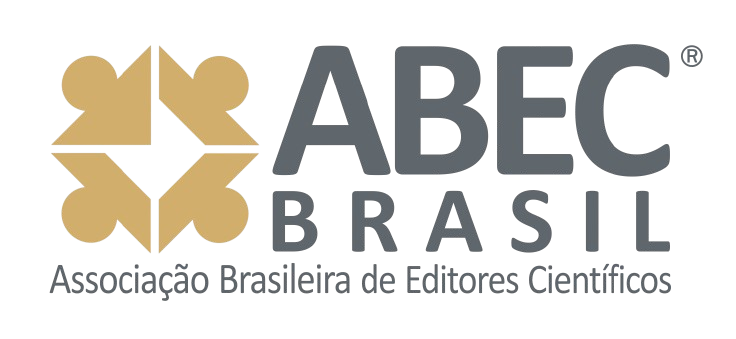Proposing a Project Management Model for Small and Medium-Sized Enterprises (SMEs)
DOI:
10.14211/regepe.v9i3.1475Keywords:
Project management, Small and medium-sized enterprises, Bibliometric, Lexical Analysis, Descending Hierarchical Classification.Abstract
Objective: to propose a project management model suitable for the context of small and medium-sized enterprises (SME).
Methodology/approach: through a bibliometric study associated with a lexical analysis with Descending Hierarchical Classification (DHC), this analysis allowed for statistical inferences to be made regarding the texts, to find patterns between words and phrases that clarified the concepts involved.
Main results: the research contributes to the understanding of project management in SME context, expanding the focuses on innovation, customers, employees, flexibility, and management performed by non-specialists. The conclusion pointed out the need for simplification and low cost for the implementation of these models in such organizations.
Theoretical/Methodological Contributions: this study contributed to the evolution of the literature and the pre-existing model by Kozlowski and Matejun (2016), offering the owners of SMEs the clarity in the implementation of new projects.
Relevance/Originality: the discovery of new characteristics, processes and benefits is relevant, enabling SMEs to anticipate problems; and the development of skills in project management and business management.
Social/management contributions: the application of a project management model, for SMEs, flexible to various contexts and motivations, adding value to these organizations, in terms of planning, execution and clarity of results.
Downloads
References
Adair, P., & Adaskou, M. (2015). Trade-off theory vs. Pecking order theory and the determinants of corporate leverage: Evidence from a panel data analysis upon french SMEs (2002-2010). Cogent Economics and Finance, 3(1), 1-12. DOI: https://doi.org/10.1080/23322039.2015.1006477
Almeida, J. M. S. de, Costa, P. R. da, Braga Junior, S. S., & Porto, G. S. (2018). Capacidade Relacional e Desenvolvimento de Novos Produtos em Pequenas Empresas de Base Tecnológica. Regepe – Revista de Empreendedorismo e Gestão de Pequenas Empresas, 7(3), 141-166. DOI: https://doi.org/10.14211/regepe.v7i3.857
Bernardo, E. G., Ramos, H. R., & Vils, L. (2018). Panorama da Produção Científica em Empreendedorismo Rural: Um Estudo Bibliométrico. Regepe – Revista de Empreendedorismo e Gestão de Pequenas Empresas, 8(1), 102-125. DOI: https://doi.org/10.14211/regepe.v8i1.1165
Bos-Brouwers, H. E. J. (2010). Corporate sustainability and innovation in SMEs: Evidence of themes and activities in practice. Business Strategy and the Environment, 19(7), 417-435. DOI: https://doi.org/10.1002/bse.652
Breu, F., Guggenbichler, S., & Wollmann, J. (2008). Strategic Networks. Vasa, 21(3), 203-215. DOI: https://doi.org/10.1024/0301-1526.37.S71.3
Camargo, B. V., & Justo, A. M. (2013). Iramuteq: um software gratuito para análise de dados textuais. Temas em Psicologia, 21(2), 513-518. DOI: https://doi.org/10.9788/TP2013.2-16
Carvalho, B. D., & Mello, C. H. P. (2012). Aplicação do método ágil scrum no desenvolvimento de produtos de software em uma pequena empresa de base tecnológica. Gestão & Produção, 19(3), 557-573. DOI: https://doi.org/10.1590/S0104-530X2012000300009
Castro, L. M., & Moraes, R. D. O. (2015). Uso de modelos de maturidade em gestão de projetos em uma pequena empresa de TI. Anais do Simpósio Internacional de Gestão de Projetos, Inovação e Sustentabilidade – SINGEP, São Paulo, SP, Brasil, 4.
Cohen, W. M., & Levinthal, D. A. (2009). Absorptive Capacity: A New Perspective on and Innovation Learning. Administrative Science Quarterly 35(1), 128-152. DOI: https://doi.org/10.2307/2393553
Dobbs, M., & Hamilton, R. T. (2007). Small business growth: recent evidence and new directions. International Journal of Entrepreneurial Behavior & Research, 13(5), 296-322. DOI: https://doi.org/10.1108/13552550710780885
Jamali, D., Zanhour, M., & Keshishian, T. (2009). Peculiar strengths and relational attributes of SMEs in the context of CSR. Journal of Business Ethics, 87(3), 355-377. DOI: https://doi.org/10.1007/s10551-008-9925-7
Jenkins, H. (2006). Small business champions for corporate social responsibility. Journal of Business Ethics, 67(3), 241-256. DOI: https://doi.org/10.1007/s10551-006-9182-6
Jenkins, H. (2009). A “business opportunity” model of corporate social responsibility for small – and medium – sized enterprises. Business Ethics-a European Review, 18(1), 21-36. DOI: https://doi.org/10.1111/j.1467-8608.2009.01546.x
Jucá Júnior, A. S., Conforto, E. C., & Amaral, D. C. (2010). Maturidade em gestão de projetos em pequenas empresas desenvolvedoras de software do Polo de Alta Tecnologia de São Carlos. Gestão & Produção, 17(1), 181-194. DOI: https://doi.org/10.1590/S0104-530X2010000100014
Köksal, B., & Orman, C. (2014). Determinants of capital structure: evidence from a major developing economy. Small Business Economics, 44(2), 255-282. DOI: https://doi.org/10.1007/s11187-014-9597-x
Kozlowski, R., & Matejun, M. (2016). Characteristic features of project management in small and medium-sized enterprises. E+M Ekonomie a Management, 19(1), 33-48. DOI: https://doi.org/10.15240/tul/001/2016-1-003
Kwak, Y. H., & Anbari, F. T. (2009). Analyzing project management research: Perspectives from top management journals. International Journal of Project Management, 27(5), 435-446. DOI: https://doi.org/10.1016/j.ijproman.2008.08.004
Leone, N. M. D. C. P. (1991). A dimensão física das pequenas e médias empresas (PME’S): À procura de um critério homogeneizador. Revista de Administração de Empresas, 31(2), 53-59. DOI: https://doi.org/10.1590/S0034-75901991000200005
Lewis, Virginia L., & Churchill, N. C. (1983). The Five Stages of Small Business Growth. Harvard Business Review, 61(3), 30-50.
Martens, C. D. P., Belfort, A. C., Carneiro, K. D. A., & Martens, M. L. (2014). Gerenciamento de projetos em micro e pequenas empresas. Revista Pensamento Contemporâneo em Administração, 8(3), 151-171. DOI: https://doi.org/10.12712/rpca.v8i3.395
Mugnaini, R., & Strehl, L. (2008). Recuperação e impacto da produção científica na era Google: uma análise comparativa entre o Google Acadêmico e a Web of Science. Encontros Bibli: Revista Eletrônica de Biblioteconomia e Ciência Da Informação, 13, 92-105. DOI: https://doi.org/10.5007/1518-2924.2008v13nesp1p92
Oliveira, N. M., & Figueiredo, P. (2016). Gestão de projetos em pequenas e médias empresas: Pesquisa ação em uma empresa da indústria da moda. In Workshop de Gestão, Tecnologia Industrial e Modelagem Computacional, 2, 78-79.
Packendorff, J. (1995). Inquiring into the temporary organization: New directions for project management research. Scandinavian Journal of Management, 11(4), 319-333. DOI: https://doi.org/10.1016/0956-5221(95)00018-Q
Pollack, J., & Adler, D. (2016). Skills that improve profitability: The relationship between project management, IT skills, and small to medium enterprise profitability. International Journal of Project Management, 34(5), 831-838. DOI: https://doi.org/10.1016/j.ijproman.2016.03.004
Quevedo-Silva, F., Santos, E. B., Brandão, M. M., & Vils, L. (2016). Estudo Bibliométrico: Orientações sobre sua Aplicação. Revista Brasileira de Marketing, 15(2), 246-262. DOI: https://doi.org/10.5585/remark.v15i2.3274
Schumacher, E. F. (1983). O negócio é ser pequeno: um estudo de economia que leva em conta as pessoas (Vol. 1). Rio de Janeiro: Zahar.
Sebrae. (2014). Participação das Micro e Pequenas Empresas na Economia Brasileira. Brasília: Sebrae.
Sella, V. T., & Grzybovski, D. (2011). Modelo PMBOK/PMI para gestão de projetos nas micro e pequena empresas: um estudo de caso. Revista Economia & Gestão, 11(27), 36-66. DOI: https://doi.org/10.5752/P.1984-6606.2011v11n27p36
Serrasqueiro, Z., & Caetano, A. (2015). Trade-Off Theory versus Pecking Order Theory: capital structure decisions in a peripheral region of Portugal. Journal of Business Economics and Management, 16(2), 445-466. DOI: https://doi.org/10.3846/16111699.2012.744344
Silva, S. A. D. A. M., & Matamoros, E. P. (2015). Gestão de projetos como ferramenta estratégica para pequenas empresas. Revista de Ciências Gerenciais, 14(20), 27-47.
Simpson, M., Taylor, N., & Barker, K. (2004). Environmental responsibility in SMEs: Does it deliver competitive advantage? Business Strategy and the Environment, 13(3), 156-171. DOI: https://doi.org/10.1002/bse.398
Small, H. (1973). Co-citations in the scientific literature: a new measure of the relationship beetween two documents. Journal of the American Society for Information Science, 24(4), 265-269. DOI: https://doi.org/10.1002/asi.4630240406
Souza, A. M. D., Souza, M. D. V., & Souza Júnior, A. A. D. (2014). Fatores críticos para gerenciar projetos em empresas de pequeno porte. Anais do Simpósio de Engenharia de Produção de Sergipe – Simprod, São Cristóvão, Sergipe, Brasil, 6.
Spence, L. (1999). Does size matter? The state of the art in small business ethics. Business Ethics: A European Review, 8(3), 163-174. DOI: https://doi.org/10.1111/1467-8608.00144
Subrahmanya, M. B. (2004). Small industry and globalisation: Implications, performance and prospects. Economic and Political Weekly, 39(18), 1826-1834.
Svejvig, P., & Andersen, P. (2015). Rethinking project management: A structured literature review with a critical look at the brave new world. International Journal of Project Management, 33(2), 278-290. DOI: https://doi.org/10.1016/j.ijproman.2014.06.004
Tehseen, S., Ahmed, F. U., Qureshi, Z. H., Uddin, M. J., & Ramayah, T. (2019). Entrepreneurial competencies and SMEs’ growth: the mediating role of network competence. Asia-Pacific Journal of Business Administration, 11(1), 2-29. DOI: https://doi.org/10.1108/APJBA-05-2018-0084
Turner, R., Ledwith, A., & Kelly, J. (2010). Project management in small to medium‐sized enterprises. International Journal of Project Management, 28(8), 744-755. DOI: https://doi.org/10.1016/j.ijproman.2010.06.005
Turner, R., Ledwith, A., & Kelly, J. (2012). Project management in small to medium-sized enterprises: Tailoring the practices to the size of company. Management Decision, 50(5), 942-957. DOI: https://doi.org/10.1108/00251741211227627
Vial, G. (2019). Understanding digital transformation: A review and a research agenda. Journal of Strategic Information Systems, 28(2), 118-144. DOI: https://doi.org/10.1016/j.jsis.2019.01.003
Zupic, I., & Čater, T. (2015). Bibliometric Methods in Management and Organization. Organizational Research Methods, 18(3), 429-472. DOI: https://doi.org/10.1177/1094428114562629
Downloads
Published
Métricas
Visualizações do artigo: 1541 PDF (Português (Brasil)) downloads: 378 PDF downloads: 255
How to Cite
Issue
Section
License
Authors who publish in this journal agree to the following terms:
-
The author(s) authorize the publication of the text in the journal;
-
The journal is not responsible for the opinions, ideas, and concepts expressed in the texts, as they are the sole responsibility of their authors;
-
Authors retain copyright and grant the journal the right of first publication, with the work published under the CC BY 4.0
License, which allows sharing the work with acknowledgment of authorship and initial publication in this journal;
-
Authors are allowed and encouraged to post their work (Submitted version, Accepted version [Manuscript accepted by the author], or Published version [Record version]) online, for example in institutional repositories or preprints, as it can lead to productive exchanges as well as earlier and greater citation of published work. REGEPE requires that authors indicate/link the published article with DOI. See the Effect of Open Access.















